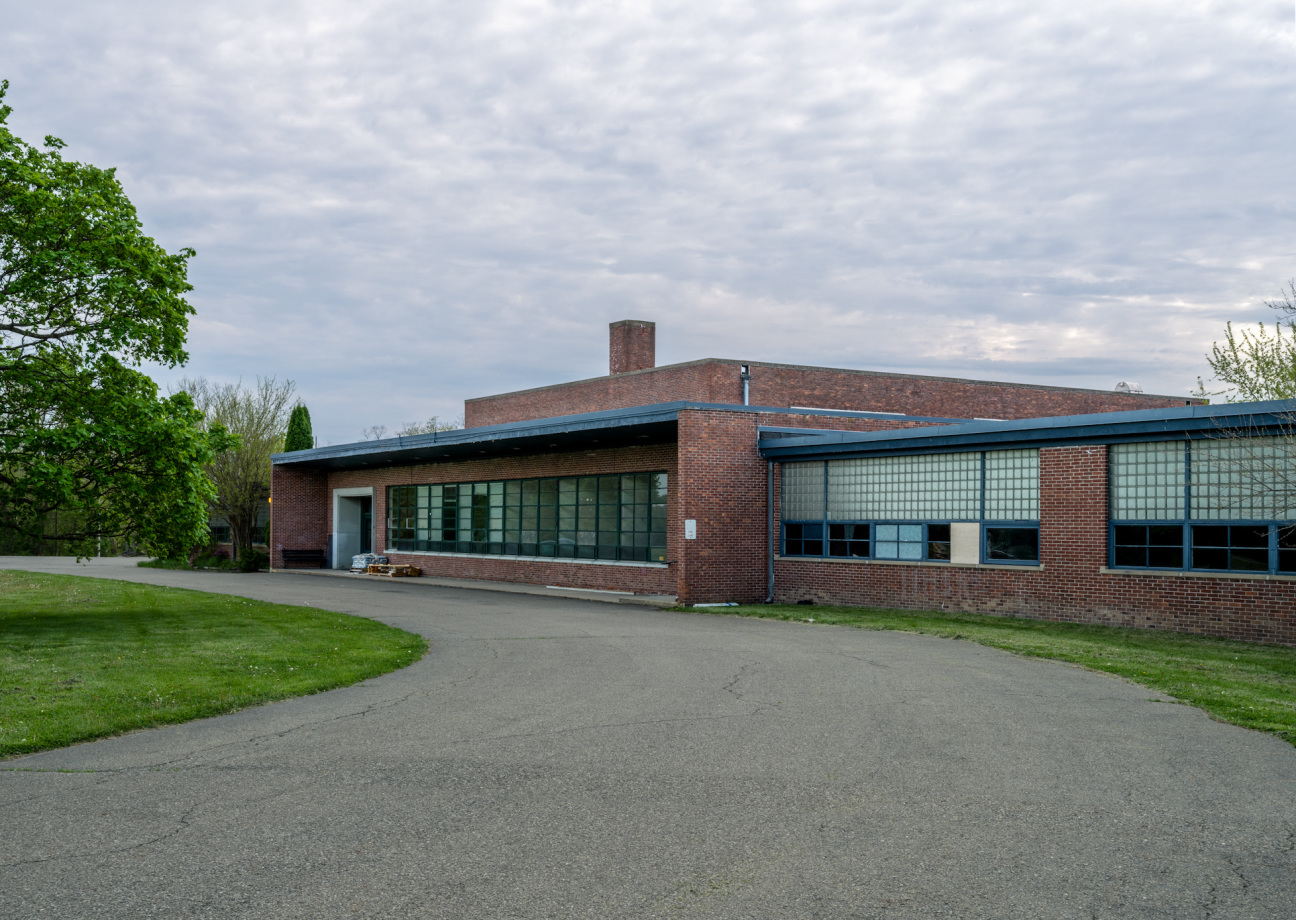
As with so many New York stories, the one you’re about to read starts with real estate. As with so many art world stories, it starts with existential fears among midsize art dealers.
This summer, six galleries are joining forces at the Campus, a new art space in upstate Claverack in a disused 1952 school. The founders—Bortolami, James Cohan, Kaufmann Repetto, Anton Kern, Andrew Kreps, and Kurimanzutto—have galleries in Manhattan, but struggled to find suitable storage space and dreamt of a bigger canvas.
Drawing mostly from the 200 artists on their rosters, the debut show opens June 29 and is organized by guest curator Timo Kappeller. The lineup features about 80 artists, including blue-chip stars like Cecily Brown, Petrit Halilaj, Rachel Harrison, and Jenny Holzer, as well as late influential figures like Philip Pearlstein and Roy Lichtenstein. Complementing it is a group show curated by the fellows at New Haven arts incubator NXTHVN.

Kreps started scouting real estate in the area, already a burgeoning art destination, during the pandemic. He was partly out to find storage, but when he came across the 78,000-square-foot Ockawamick School and its 22 acres, it seemed too good to pass up.
The price was too high for Kreps, and he brought it up with Cohan in conversations during the dark days of lockdown. “We were wondering if we would continue to even have galleries,” he says. Ockawamick was too big even for the two of them, so they spread the word among other galleries with common values and of a similar scale. “I wouldn’t call any of us category killers,” Cohan says dryly. They reportedly paid $1.2 million.
Siting an art exhibition in a disused school isn’t unheard of. One powerful inspiration for Kreps was the 2006 Berlin Biennial, which was partially held in a Jewish school for girls that had been shuttered by the Nazis. There’s also MoMA PS1 in Queens as well as New York dealer Jack Shainman’s upstate location the School.

The Campus will retain rough edges like dented lockers and uneven paint jobs. Some artists will respond to specific spaces, like classrooms and science labs. Miguel Calderón, who spent his childhood in Mexico watching American high school movies, will create a work in response to that iconic teenage fixture, the locker. Trenton Doyle Hancock will install work that references basketball in the gym. Drawing on pedagogical vocabulary, choreographer William Forsythe will give participants an “assignment” to carry out on the former football field.
Cohan describes the project as a much-needed alternative to a siloed existence. “The myth of the ‘art community’ is somewhat hollow,” he says, adding that dealers are rugged individualists—and opinionated ones. Can a cohesive show come from their varying rosters?

That’s where Kappeller comes in. He earned Kreps’s trust as a director at his gallery before going on to Hauser & Wirth; he is now a freelance curator. If, to mix several metaphors, there might be too many cooks in the Campus kitchen, Kreps calls Kappeller a “referee”; Cohan dubs him “the ringmaster.” For his part, Kappeller says he has served as “a moderator” in “an unheard-of collaborative process.” As it happens, his first job was as an assistant on Okwui Enwezor’s 2002 documenta exhibition, an experience that taught him what it takes to organize such a large-scale exhibition. But he’s never before helmed a project at this scale solo.
One of the toughest issues early on, according to Cohan, was coming up with the name, since “the School” was already taken. And in the run-up to the opening, he adds, “The biggest issue is what sort of beer we’re going to serve.”
The Campus's inaugural exhibition will be on view in Claverack from June 29 through October 27, 2024.










 in your life?
in your life?

